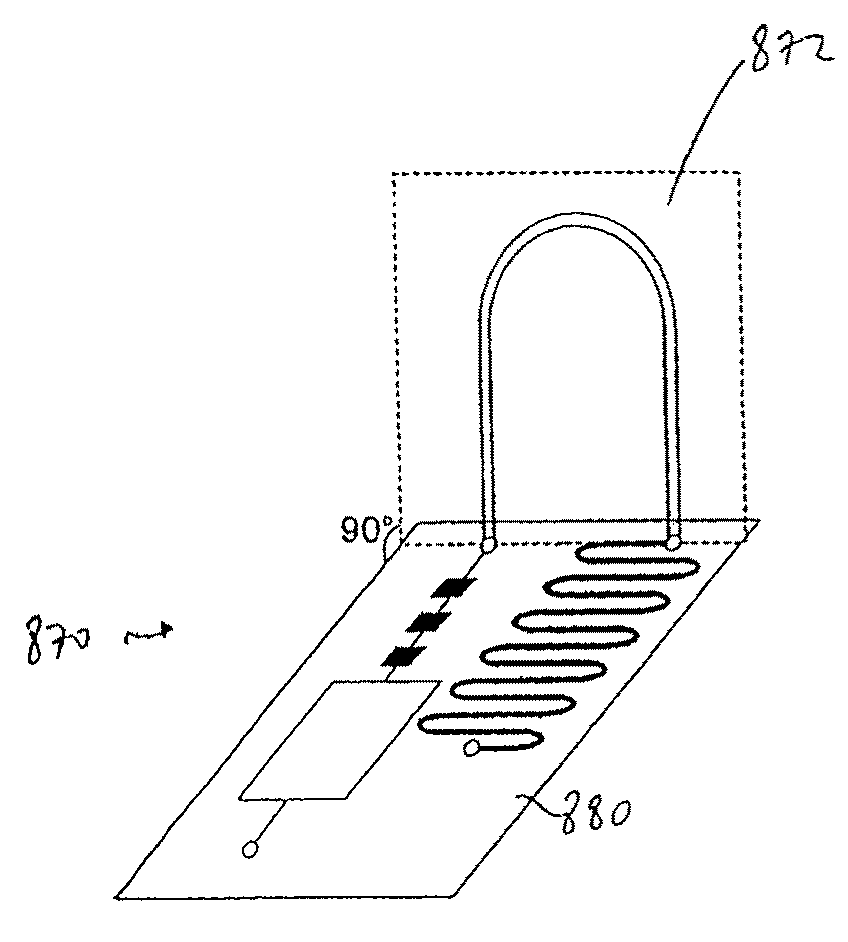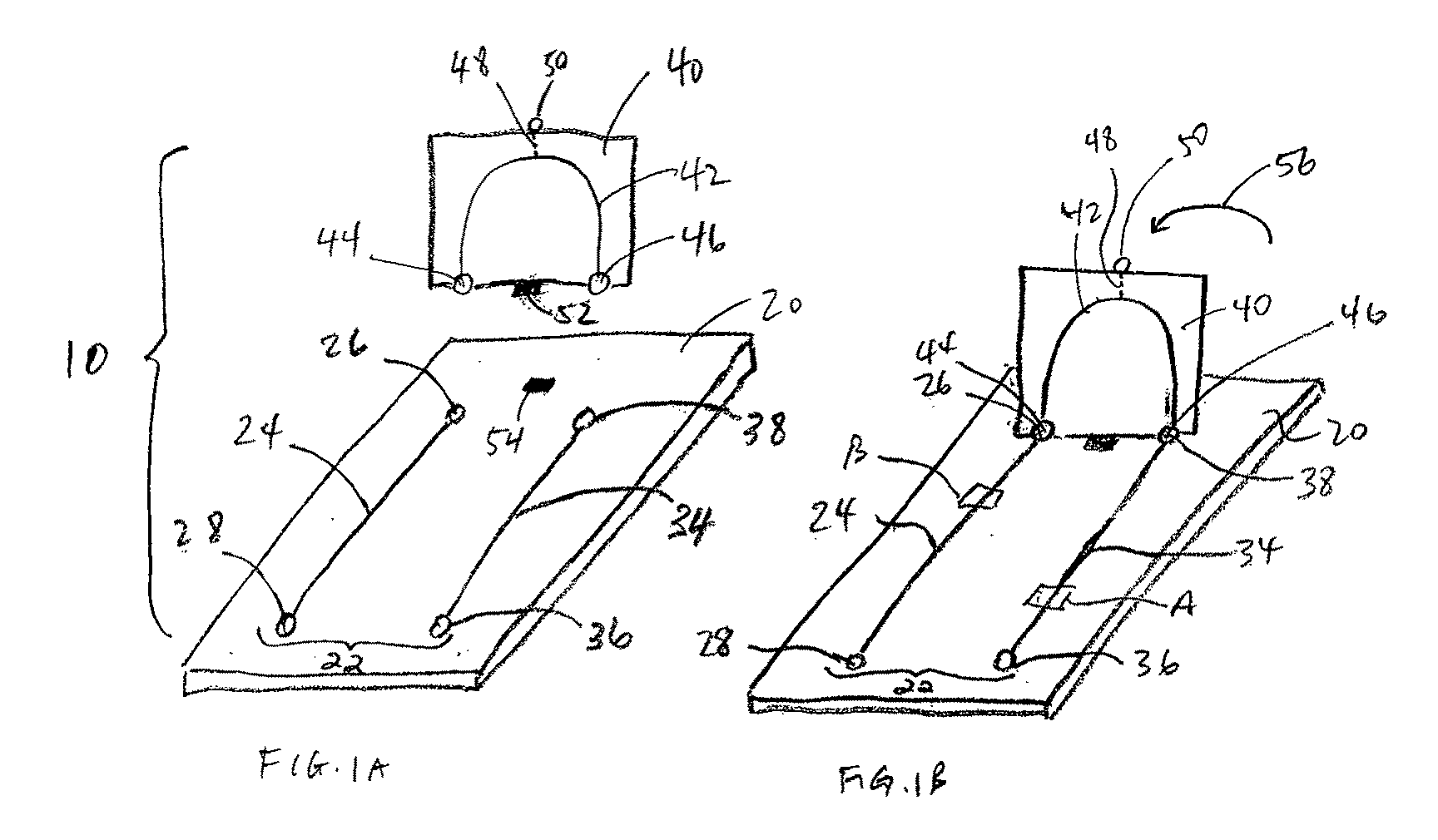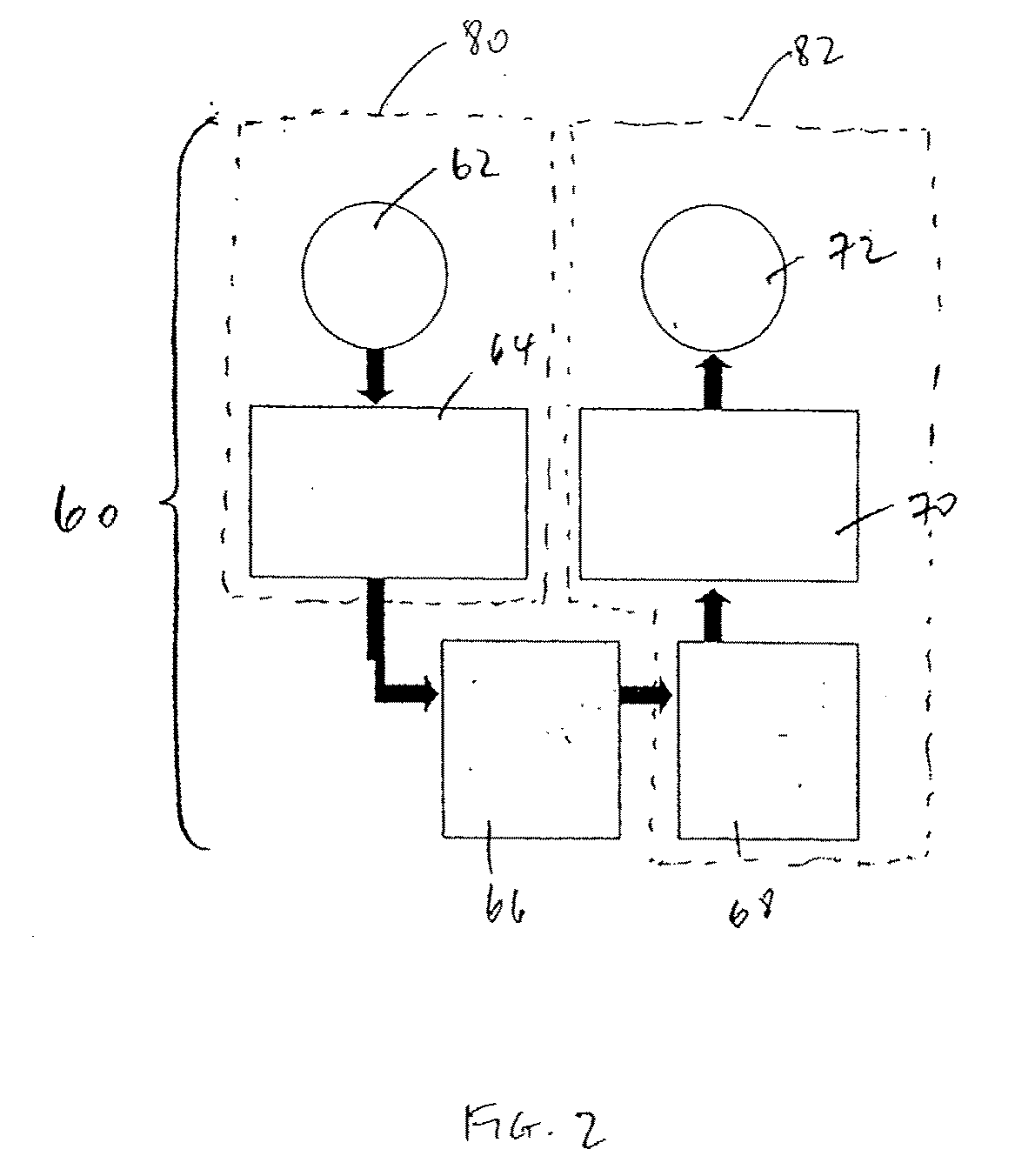Fluidic connectors and microfluidic systems
a technology of microfluidic systems and connectors, applied in the field of microfluidic systems and components thereof, can solve the problems of dead volume of many world-to-chip connectors, inability to match the volume of on-chip volume with respect to volume, and high cost and sophistication of fluid delivery to the platform
- Summary
- Abstract
- Description
- Claims
- Application Information
AI Technical Summary
Benefits of technology
Problems solved by technology
Method used
Image
Examples
example 1
Fabrication of Microfluidic Channels in a Substrate
[0189]A method for fabricating a microfluidic channel system is described.
[0190]The layouts of the channel system were designed with a computer-aided design (CAD) program and are illustrated in FIGS. 3 and 4. The microfluidic devices were formed in poly(dimethylsiloxane) Sylgard 184 (PDMS, Dow Corning, Distrelec, Switzerland) by rapid prototyping using masters made in SU8 photoresist (MicroChem, Newton, Mass.). The masters were produced on a silicon wafer and were used to replicate the negative pattern in PDMS. The masters contained two levels of SU8, one level with a thickness (height) of ˜50 μm defining the channels in the immunoassay area, and a second thickness (height) of ˜250 μm defining the reagent storage and waste areas. The master was silanized with (tridecafluoro-1,1,2,2-tetrahydrooctyl)trichlorosilane (ABC-R, Germany). PDMS was mixed according to the manufacturer's instructions and poured onto the master. After polymeriz...
example 2
Storing Reagents in a Microfluidic System
[0192]This example describes a method for storing dry and liquid reagents in a microfluidic system.
[0193]Dry and wet reagents were stored in the microfluidic systems shown in FIGS. 3-5 and 14. To store dry reagents, drops of biomolecules were placed onto the detection zones of the substrate. After 30 min, the solution was removed and the surface of the substrate modified with proteins was rinsed with buffer. The surface was dried with compressed nitrogen for 20 s, and then the substrate was sealed against a cover. The cover was either a plate of polystyrene (in the case PDMS substrates) (NUNC Omnitray, VWR, Switzerland) or a biocompatible adhesive (in the case of polystyrene substrates). When a biocompatible adhesive was used, the polystyrene substrate was drilled to obtain access holes prior to application of the cover. In a different approach, the holes were formed in the thermoplastic during the injection molding process by using pillars i...
example 3
Performing an Immunoassay by Loading a Sample Using an Open-Ended Capillary Tube
[0198]This example shows that an immunoassay can be performed by loading a sample using an open-ended capillary tube and using reagents stored on a microfluidic substrate.
[0199]The microfluidic system of FIG. 7 was fabricated using the method described in Example 1. This system included four sections: a reagent storage area, a sample loading area, an immunoassay area and a waste area. The reagent storage area was pre-filled with reagents required to perform an immunoassay for the detection of total human IgG in whole blood: antibody solutions, washing buffers and amplification reagents (either enzymatic substrates or silver amplification reagents) using the method described in Example 2. These reagents were presented as ready-to-use aqueous solutions loaded as a sequence of liquid plugs, separated from each other by air gaps.
[0200]A sample of blood from a donor was obtained and the sample was loaded into...
PUM
| Property | Measurement | Unit |
|---|---|---|
| diameter | aaaaa | aaaaa |
| diameter | aaaaa | aaaaa |
| time | aaaaa | aaaaa |
Abstract
Description
Claims
Application Information
 Login to View More
Login to View More - R&D
- Intellectual Property
- Life Sciences
- Materials
- Tech Scout
- Unparalleled Data Quality
- Higher Quality Content
- 60% Fewer Hallucinations
Browse by: Latest US Patents, China's latest patents, Technical Efficacy Thesaurus, Application Domain, Technology Topic, Popular Technical Reports.
© 2025 PatSnap. All rights reserved.Legal|Privacy policy|Modern Slavery Act Transparency Statement|Sitemap|About US| Contact US: help@patsnap.com



